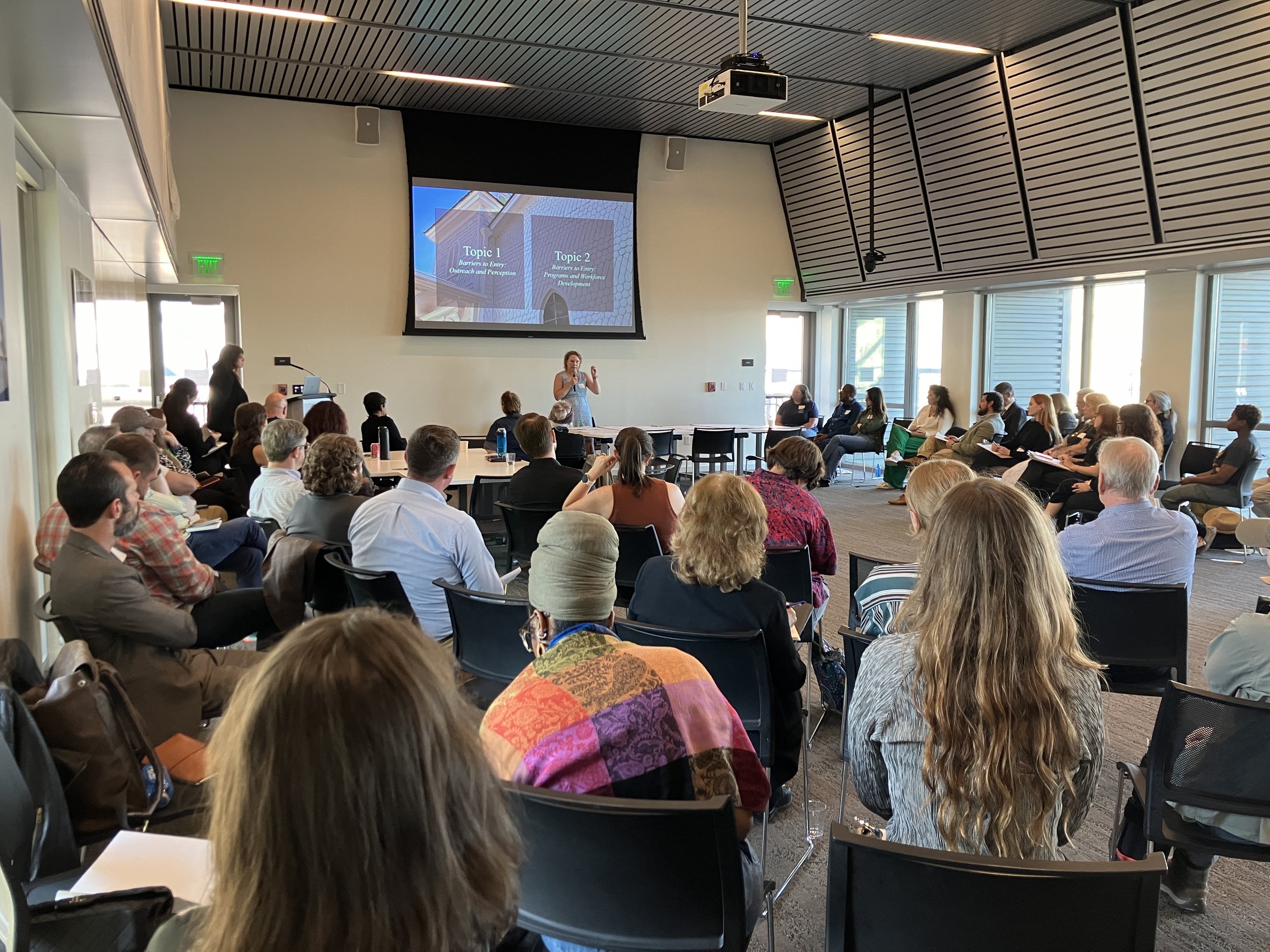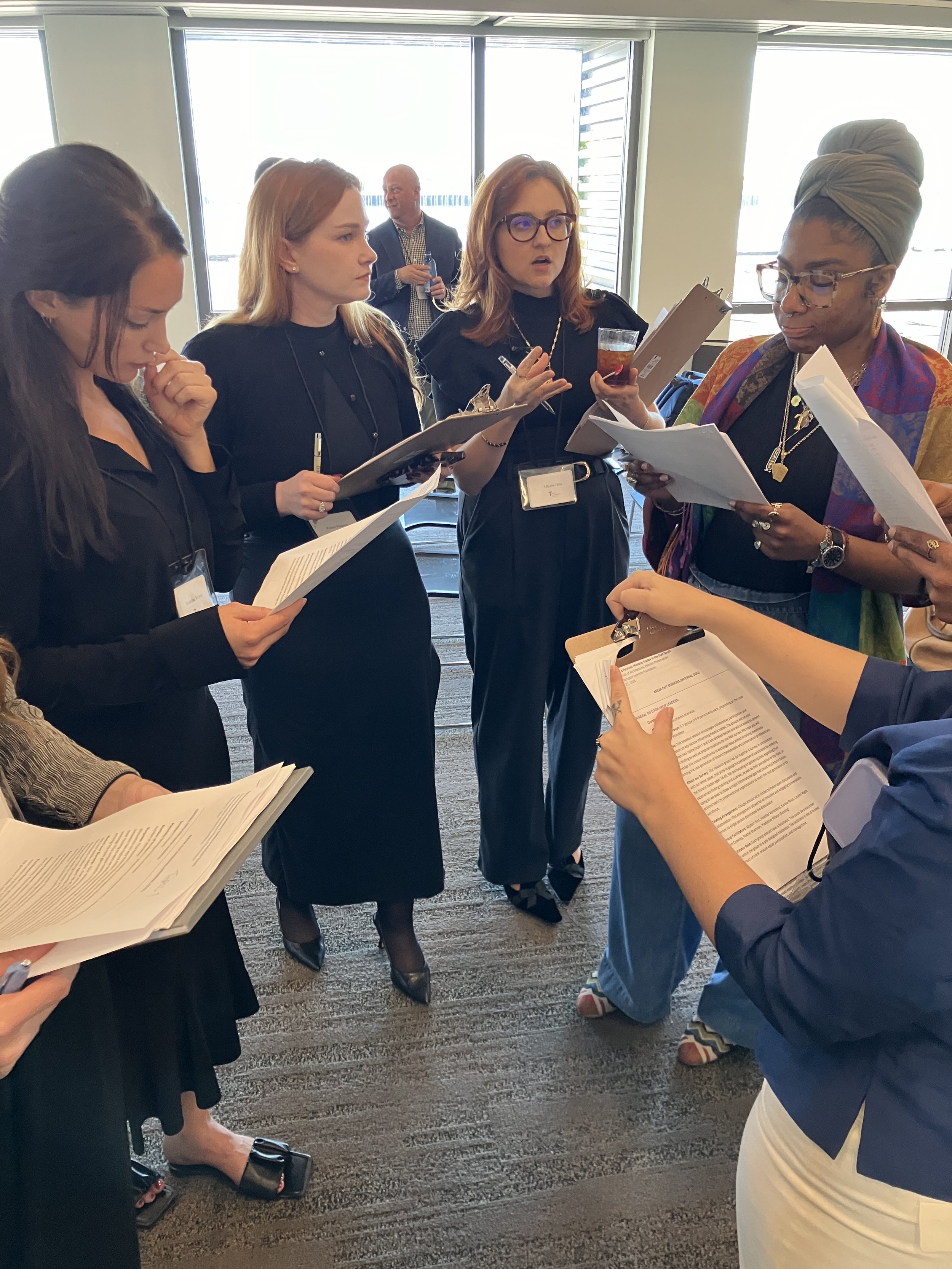Tulane and Jenrette Foundation convene pivotal meeting about labor gaps in historic trades
Author: William Richards, Ph.D.
Tulane and the Jenrette Foundation convened scholars and industry insiders to discuss “Resilience & Revival,” a new state-of-the-profession report that looks at historic trades and the labor gap.
On October 27, 2024, the Tulane University School of Architecture and the Richard Hampton Jenrette Foundation convened scholars and industry insiders in New Orleans to discuss their joint report, “Resilience & Revival: Addressing the Historic Trades Workforce Shortage in the Gulf South,” which documents the significant economic impact of historic preservation in the U.S. despite the critical shortage of skilled trades workers needed for rehabilitation projects.
Panelists for the event included Meredith Massey, Deputy Director of the Historic Preservation Division at Mississippi Department of Archives and History; Barry White, Mississippi's Deputy State Historic Preservation Officer, and Director of the Historic Preservation Division at the Mississippi Department of Archives and History; Mary Bindas, a Building Preservation Specialist at the National Park Service’s National Center for Preservation Technology and Training; Nick Conner, an award-winning woodworker with over 20 years of experience in woodwork fabrication and historic renovation; Karina Roca is a researcher, storyteller and blacksmith apprentice, studying under master blacksmith Darryl Reeves in New Orleans; Alejandro García Hermida, an architect and Professor of Practice at the School of Architecture of the Polytechnic University of Madrid; and Christina Butler, Dean of Faculty and Professor at the American College of the Building Arts, where she teaches courses in historic preservation and architectural history.
“Historic trades workers have been imperative to saving historic buildings,” says Samantha Crowley, one of the meeting’s co-organizers who is completing a master’s degree in historic preservation at Tulane. “For that reason, I think it’s imperative for students to understand building materials and how things work. We can’t all be skilled tradespeople, but we can—and should—know exactly what that work entails.”
The one-day workshop and panel session focused on the urgent demand for skilled craftspeople in the historic trades and building arts in the coming decades, and the challenges faced by their professional pipelines.
As more and more buildings achieve historic status nationwide, the need for skilled heritage trades workers is expected to rise in the coming decades. Yet, the lingering effects of the 2008 global economic recession, stigmatized trade jobs, and an aging workforce within preservation broadly have created pipeline challenges for masonry, metalworking, carpentry, and woodworking.
“The work of preservationists must transform—we need to reestablish a better understanding of historic craft and cultivate collaboration with tradespeople who are scientists and artists in equal measure,” says Benjamin Prosky, President of the Richard Hampton Jenrette Foundation.
“In order for preservation to continue to thrive,” says Prosky, “we have to understand its biggest threats—ranking high among those are the threats to the pipeline of historic trades workers.”
Researchers have been challenged in the past to find a reliable and comprehensive data set that can paint an accurate picture of the state of the pipeline today. They have also been challenged to understand the motives among future masons, carpenters, welders, and others.
“One of the gaps in the research is that it largely doesn’t consider how students get into historic trades, their job prospects afterwards, and how well they’re supported,” says Allyson Hinz, one of the meeting’s co-organizers also completing a master’s degree in historic preservation at Tulane, who notes that another gap is in real-time workforce data.
To understand these motives better, the report’s sponsors and the meeting’s organizers will send a survey out to the field in the coming weeks. (If you would like to receive a copy of the survey, or know a historic trades worker who might, contact Madeline Wilson and Allyson Hinz at resilience-revival@tulane.edu.)
“It’s easy to get a hold of academics in preservation. It’s really hard to pinpoint people who work in historic trades,” she says.
These gaps predate the 2008 recession and even the historic preservation movement, itself, galvanized in the early 1960s. Recent research by the Campaign for Historic Trades and the Northwest Regional Initiative for the Preservation Trades created baselines to understand the scope of the challenge, event organizers felt there was an opportunity to leverage those results to create a future-focused action plan.
“Resilience & Revival” incorporates perceptions and preferences among trade hopefuls to identify a set of actions to meet future demand.
“There are so many different variations within the historic trades that people reading this report or thinking about getting into this field might not be totally aware of,” says Hinz, “so this is about collecting perspectives and then reflecting those perspectives back to the field. We want people to talk to each other.”
“In order for preservation to continue to thrive, we have to understand its biggest threats—ranking high among those are the threats to the pipeline of historic trades workers.”
Among the solutions the report proposes are bolstering historic trades training programs, improving awareness of technical education, and understanding stewardship’s economic opportunities. For instance, only 12 percent of historic preservation programs have a robust workforce development component, compared to 50 percent of new construction programs, according to “Resilience & Revival” which offers both a solid lead for improvement and a metric to track that improvement.
Adaptive reuse, a sector of architectural production that has claimed 50 percent of billings nationwide at architecture firms in recent years, and one that often employs preservation architects, has also been celebrated by sustainability experts as a central strategy for decarbonization. For Crowley and others, it’s yet another platform to advance the cause of historic trades work.
“The link between heritage and climate change is strong, too,” says Crowley, “and we need preservation trades workers because so many communities are affected by rising sea levels, damage from stronger storms, flooding, and land loss.”
“Resilience & Revival: Addressing the Historic Trades Workforce Shortage in the Gulf South” is a partnership between the Historic Preservation program of Tulane University’s School of Architecture and the Richard Hampton Jenrette Foundation.


